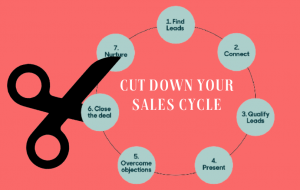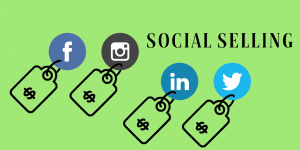In this jungle of competitors in which we live, customer retention is increasingly necessary and studied. All this because when Philip Kotler said that “getting a new customer costs 5-7 times as much as keeping a current one” he was right. Do you know how much it costs your company today to get a new customer?
In this article we will explore 4 sales strategies that directly help with customer retention!
How is customer retention in practice?
To get an idea of how much it costs to attract a new customer, just calculate a well-known KPI (Key Performance Indicator) : the CAC – Customer Acquisition Cost.
CAC is calculated by adding up everything that was spent on efforts to acquire new customers. For example: If we invest $6000 a month in customer acquisition and get 10 customers monthly, our CAC is $600. This means that for each new customer, I spend $600.
When you do this account at your company, you will understand that the acquisition value is generally much higher than the retention value and this is common.
Seeing this, many companies have invested in customer retention and loyalty, creating specific areas that ensure customer satisfaction throughout the relationship.
How do these areas work? Is it simply an area that prevents cancellations? Is it a support area when the customer has a problem? Is it an area that monitors the client’s results day by day to ensure that he will be successful with your tool? Is it a combination of all this?
The answer to the previous items depends on the business model you have. Many companies decide to bet on a passive retention area, which waits for a customer contact before starting the retention process.
Others are betting on close monitoring so that customer dissatisfaction is sporadic and does not bring major difficulties.
No matter what your company’s retention model is, what matters is that there is something that can help them all perform better and retain more and more customers: a strategic sale. You are probably confused by now and want to ask me:
- How to align sales with retention?
- How does a sales strategy influence increasing customer retention?
The relationship with the customer starts way back when marketing feeds them with content or when the salesperson makes the first cold call . From the moment someone has contact with your brand, this relationship will be marked by a series of interactions, whether positive or negative and that can influence, from the beginning, on the satisfaction of that customer. For this reason, the retention of this prospect starts right there, with the first contact.
We need to make a good impression. For this, we invest in well-designed advertisements, rich content, skilled salespeople and a well-designed product that meets the customer’s pain. It costs money. A lot of money.
To better take advantage of all these costs we have and so that we can retain our customer masterfully, something is very important: That this customer has arrived satisfactorily.
A customer who starts out on the back foot has a much higher chance of canceling a service at the first hurdle than a customer who understands the relationship with the company as built on trust and respect.
4 sales strategies that can help you retain and retain customers
Thinking about retention and this structured sales strategy, what can we do to ensure that our customer is satisfied and “open hearted” when the purchase is made?
Here are some sales strategies that can help you retain your customers and start losing less money while making a name for yourself:
1. Know your customer
Have you ever heard of ICP? ICP is the acronym for Ideal Customer Profile, which is already explained by the name itself. ICP is the customer we want and long for.
To understand our ICP, we need to understand what our value proposition is and how it fits into these profiles. If we understand our ICP, we will be able to offer exactly what it needs to be satisfied with a trade. And a happy customer is worth two.
A happy customer uses and recommends your solution. And even in times of cutting edge technology, word of mouth is still a very powerful sales weapon.
2. Have a customer-centric process
It’s great to have a process that locates and helps your salesperson sell more, but if this process doesn’t absorb and merge with a fluid and natural buying journey, your customer will feel that impact and will try to run away. Nobody likes to be uncomfortable.
We all like to feel important and in control of our decisions. Don’t take it away from your customer. Look at your process from your customer’s perspective, not your company’s.
3. Be honest
Closing a sale is very good, but if this is done based on promises that we cannot keep, this sale will only serve two things: give you a headache and tarnish your company’s image.
A dissatisfied customer is able to “speak” much louder than a satisfied customer. If you’re not sure you can offer something, don’t. The cost of losing that customer will be much higher than the loss of not closing that sale.
4. Make a good pass from this customer to the after sales
The sale has closed. Are you happy? Is your work with that client over? No. The customer only leaves your hand when you manage to install it after sales.
So that this is subtle and the customer does not feel the impact of passing the baton, keep selling even after the sale. You are the only person who knows what your customer expects as much as he does.
Convey this message in the best possible way and make sure that the after sales will have this information very clearly. A canceled sale hurts the company and the customer far more than a sale that never happened. Be responsible to your stakeholders.
What is the next step?
If you follow a strategy in which the customer is the center of the process and not your company, you have a high chance of retaining customers much more easily and retaining customers goes far beyond saving money, even though this is a crucial point. Retaining customers brings growth and builds trust and respect for your brand. And what company doesn’t want to be a reference in a conversation about its core business?




